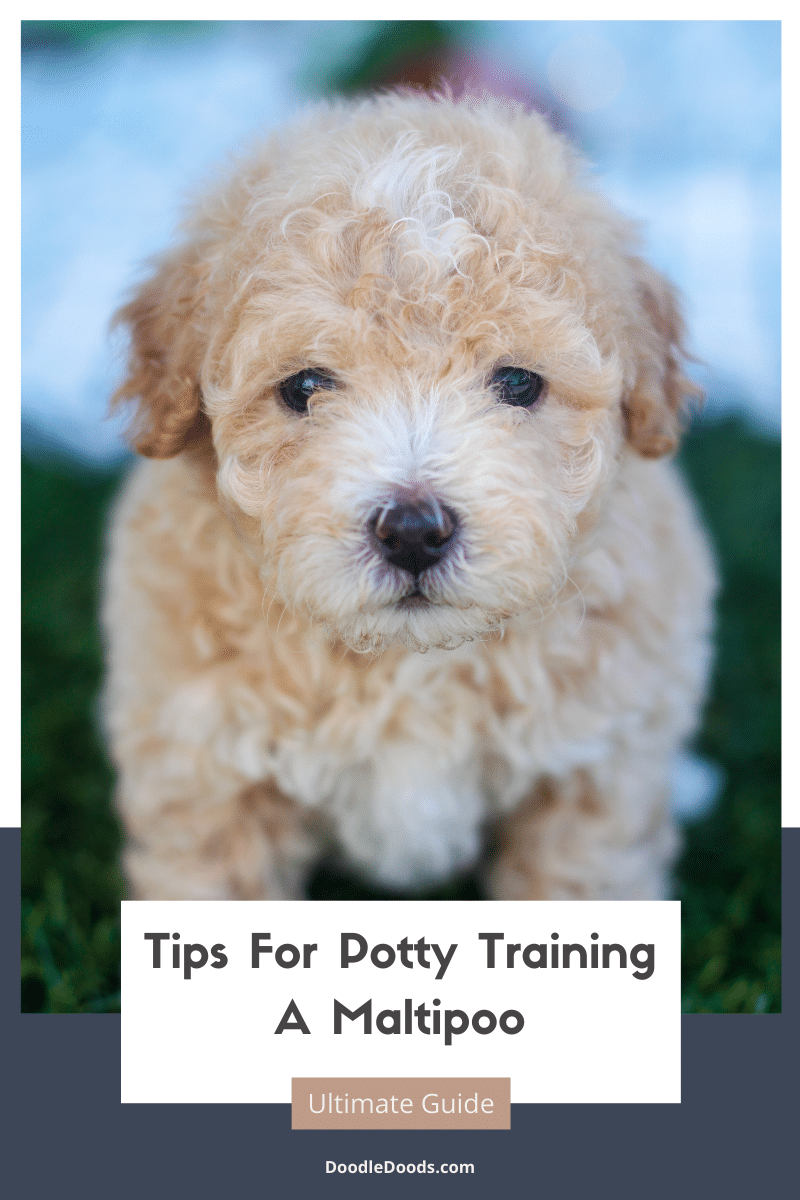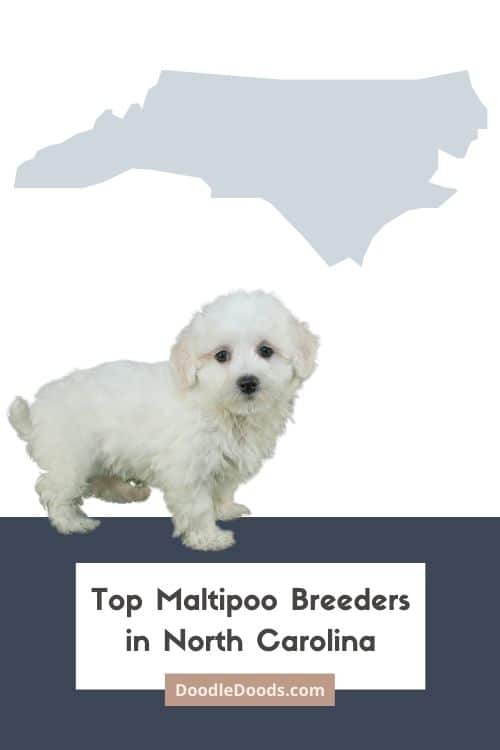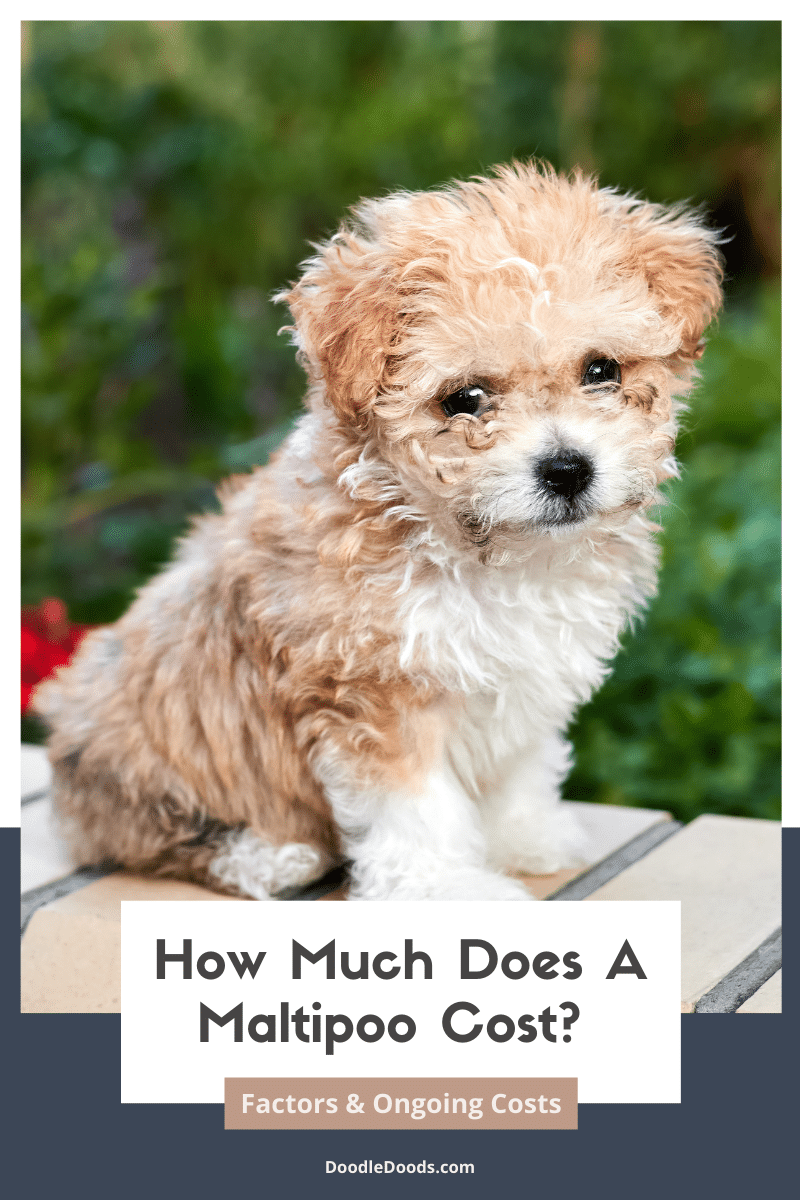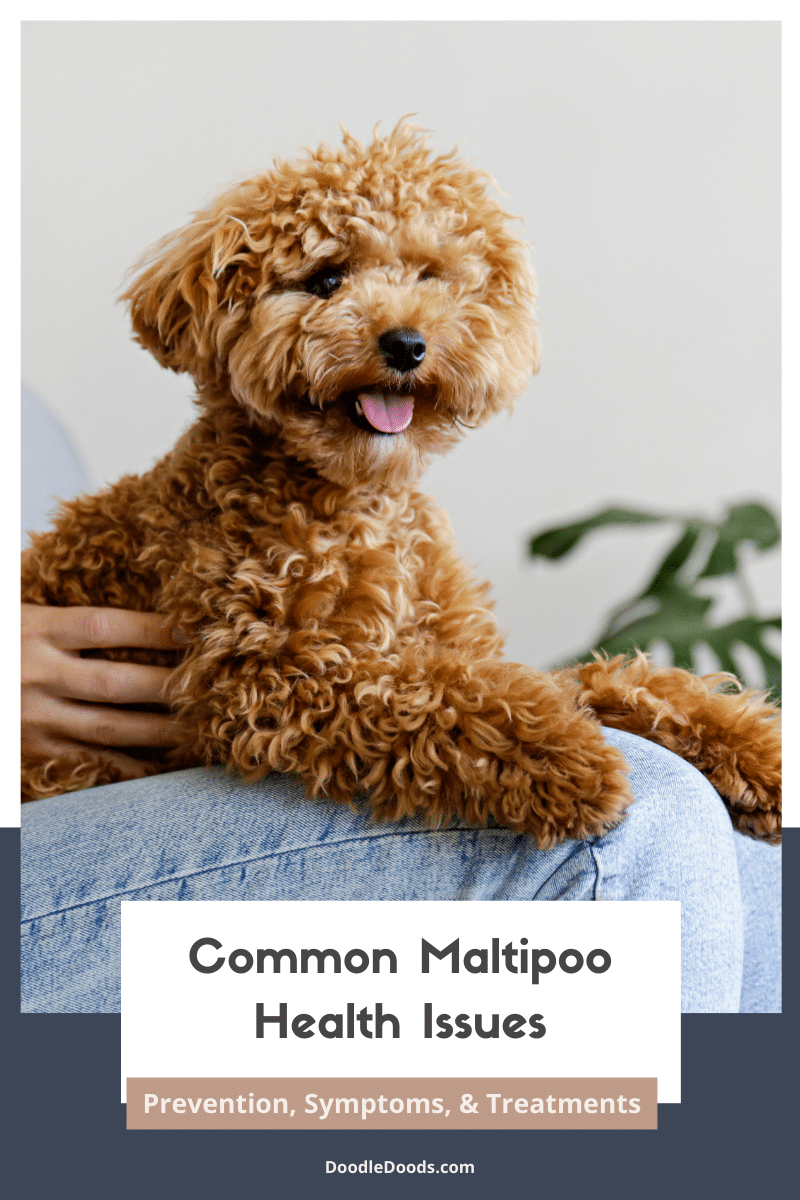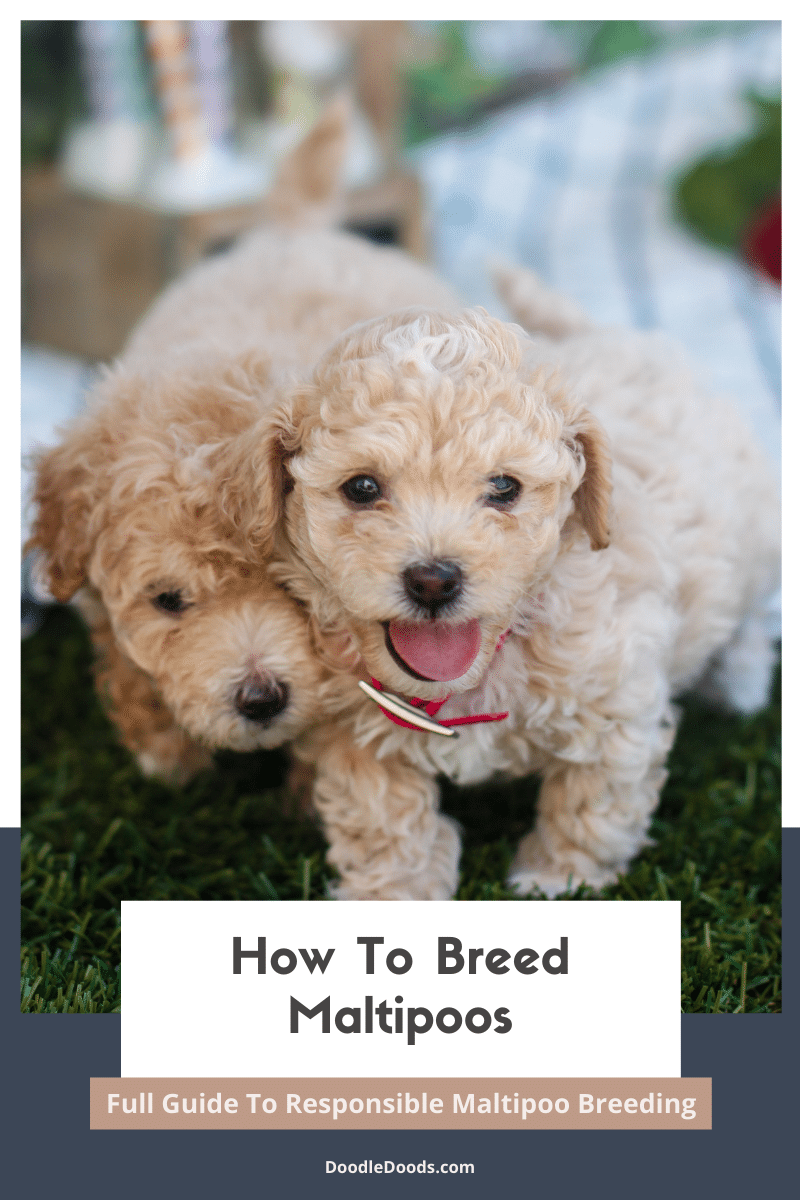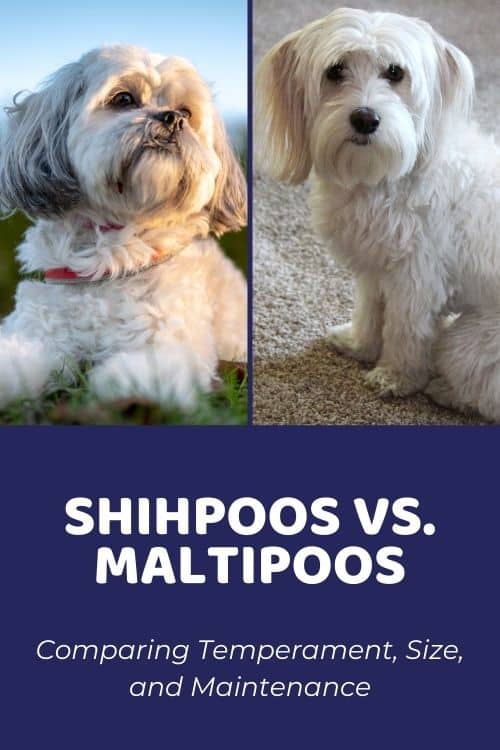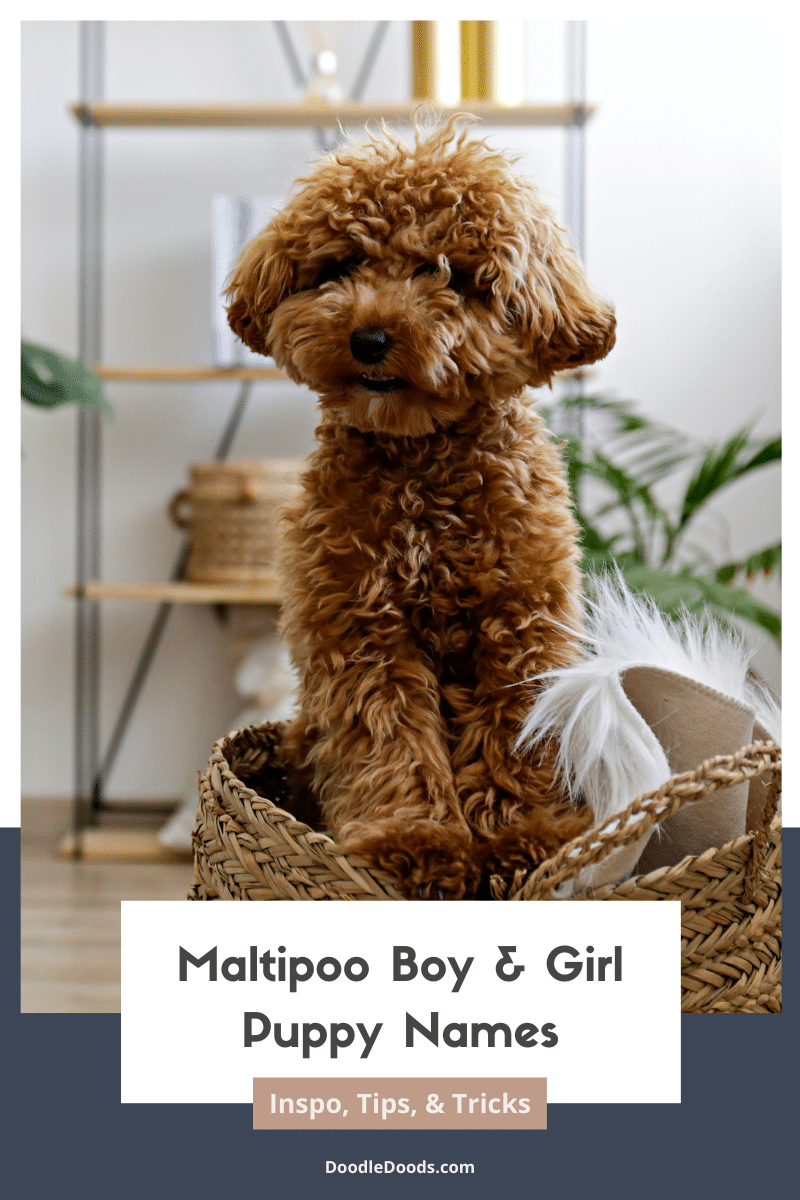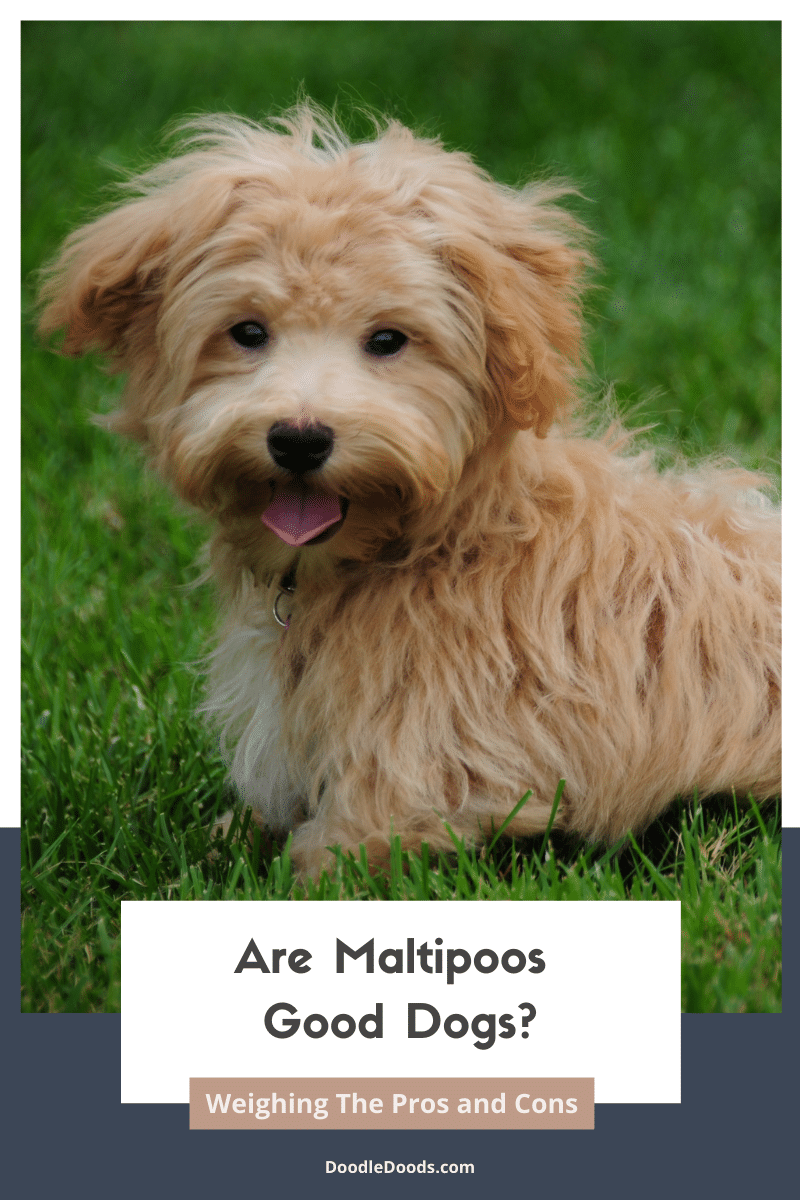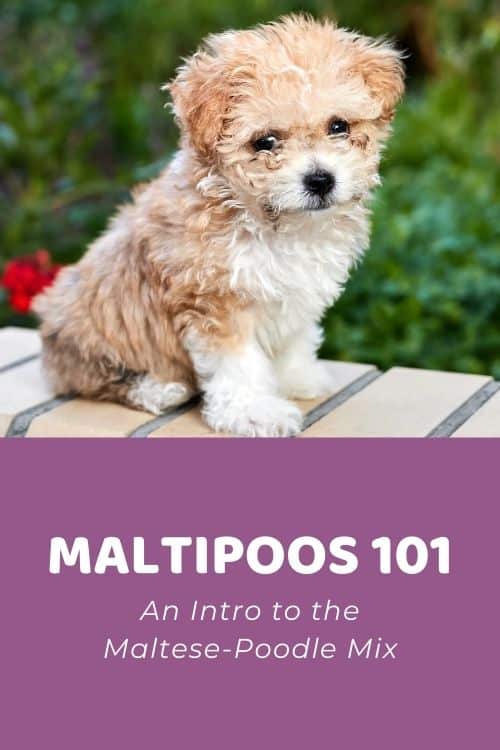Constantly cleaning up after your new puppy is no new owner’s idea of a good time. That’s why you’ll want to get housetraining done and dusted just as fast as you can. Unfortunately, it’s often not that simple. Getting potty training done takes a little time and a lot of patience! However, go about it the right way, and you’ll only have to do it once. Happily, Maltipoos are pretty smart pups, and aside from a slight stubborn streak that they may have inherited from their Maltese side (little dogs, am I right?), they are eager to please their family. However, if you’re a newbie owner, you might be at a complete loss. That’s why we have compiled this handy guide to potty training your Maltipoo.
Table of Contents
- When To Start Potty Training
- How Long Will Potty Training Take?
- Potty Training Your Maltipoo
- Frequently Asked Questions About Potty Training A Maltipoo
- Potty Training Maltipoo: Conclusion
When To Start Potty Training
The short answer to the question of when to begin potty training your Maltipoo is right from the moment you bring them home. Getting off on the right foot right from the beginning will make the whole process that much easier. After all, it’s far more simple to train a dog to do something without having to train them out of doing something else first. Getting into a routine right from the get-go really is in both your best interests, especially as, chances are, the breeder you purchased your pet from will likely have given you a little leg up in this respect by initiating potty training when your puppy was still with the litter.
How Long Will Potty Training Take?
As much as you don’t want to hear this, it can take months to fully train your new puppy – even up to as long as a year! However, it’s important to keep in mind that for a large part of this time, your pup should be (mostly!) housetrained. That is, after the first month or two, your Malti (with the proper instruction) will acquire an understanding of what the toilet rules are. However, you have to factor in that until they are fully mature, they won’t have the same kind of control over their bodies as an adult dog does. So, accidents are pretty inevitable, especially on occasions your pal gets overly excited or slightly anxious.
Potty Training Your Maltipoo
1. Create A Schedule
As you’ll want to be ready to hit the ground running with potty training as soon as you get your little bundle of fluff home, it’s good to do a little preparation ahead of time. Central to this is developing a schedule that will work for both of you. Dogs love routine, and it works well for them when they know what to expect. If you’re feeding them at specific times each day and then taking them out to the toilet for the same, you’ll all get into a good little habit of doing this. Both eating and drinking are known to stimulate (ahem) elimination, and this will help with forming a predictable potty setup.
At the very least, you’ll want to take your puppy out first thing in the morning, after any kind of at-home play, between 30 to 60 minutes after meals, after naps, before and after being confined to their crate, and before bedtime. Do keep in mind, though, that younger puppies will need more frequent toileting than older ones. In those earliest days, you might need to take your babs out around every hour or so while you’re getting used to the schedule and your puppy is learning to have better control over their bladder.
2. Take Your Maltipoo Outside
At the beginning of the potty training process, the very first thing you’ll need to do is introduce your Malti to their designated toileting spot in the yard. You should do this pretty much the moment you step through the door with your new puppy. To speed up the process, ask the breeder if they can provide you with a scrap of material that has your puppy’s scent on it. Place this in the allotted space and let your pup have a good sniff.
Just as soon as they start to take an interest in the fabric and the surrounding area, make a fuss of your fur baby. If they immediately go to the toilet there… we’ll you’re already off to a flying start! Dogs are creatures of habit, and your puppy will want to head to the same spot the very next time they need to go. That’s why it’s extra important that you…
3. Stick To The Same Spot
Setting up a specific potty place and keeping to that is essential in early potty training. You’ll want to ensure you carefully link the location with the action in your dog’s mind. Just remember that once this habit is formed, it will be tough to break. So be sure to pick the place carefully, keeping it well away from seating spaces, children’s play areas, vegetable gardens, and flower beds – where you may use potentially toxic chemicals.
Beyond that, you want it to be an area that your puppy can easily access, and that is somewhat protected from the elements. If it gives them a little privacy to do their thing (say behind a hedge or tree) more’s, the better. Some dogs can be a little shy about this, and a sheltered spot will boost their confidence and keep them focused. A further benefit of opting for the same area is that it makes cleaning up after your pet that much easier.
4. Use A Leash During Potty Time
While it may seem like an unnecessary evil to use a leash while your puppy is already in a secure space, doing this has multiple benefits. Firstly, it ensures that the spot you have pre-chosen is the one that really does become the toilet place, as you can control exactly where your puppy wanders. Moreover, it stops them from disappearing off and exploring other parts of the garden when you are aiming to keep them on task, so to speak! Finally, taking your puppy out on the leash will also give them a bit of early practice of going for walkies and get them a little more used to peeing and pooping while out and about.
5. Keep The Potty Break Short
With the aim of keeping your eye on the prize(!), aim to minimize the time spent outdoors with your puppy when you are trying to encourage them to go to the toilet. This stops them from getting distracted and it from suddenly morphing into playtime. Again, you want your Malti to remember exactly what they are doing out there. Otherwise, you’ll find yourself standing around freezing your earlobes off, and all for nothing!
If your pup doesn’t seem to get the hang of what they are out there for (even when you have returned to the same space they have used countless times before), you might find it helpful to bring in a “potty” command. Getting your dog to associate a particular word with toileting is a great first step in encouraging them to head off on their own into the garden without you even needing to be there. It also comes in handy for teaching them to ‘go do’ beyond the confines of the yard.
6. Reward Your Maltipoo For Getting It Right
Providing your pup with a reward for doing something you want them to is known as positive reinforcement. There are a few ways you can go about this. Enthusiastic praise is always a winner, as there is little doubt your puppy will love your attention above everything else. However, tasty treats are a very solid second place and can be used to further reinforce the action of your pup going to the toilet right where you want them to.
As part of your puppy’s ongoing training, you might decide to encourage them to use training bells. These are strips of material with bells attached that can be hung from the door handle. Your pup can tug on them to alert you when they need to be let outside. Again, show your pet how to use them, and offer them praise, fuss, treats, and toys when they get it right. When they don’t, just show them again. Ring the bells and take them out.
7. Don’t Be Angry About Accidents
Your Maltipoo will likely take to potty training like a bird to flight. After all, as we touched on before, these are clever little pups, and dogs learning to defecate in specific spaces is part of their natural instincts. You’ll be amazed at how quickly they are getting it right, and right again… until suddenly they don’t, and you’ll be left wondering what went wrong. Well, nothing, really – accidents happen, especially when your dog is still getting to grips will having complete working control over all their various parts.
So, instead of getting angry when this happens (we know how easy it is to say that when we’re not the ones cleaning up the resulting mess – we’ve all been there!), the trick is to find ways to prevent accidents from occurring in the first place. Your Malti will usually display clear signs that they need to go to the toilet, such as whining, circling, sniffing at items of furniture, and even (when they get a little older) scratching at the door to be let out. Aim to interrupt your pet right before they get down to business – maybe try clapping your hands or clipping on their leash – and get them (quickly!) out to their toilet spot. Once they go there, praise them as normal to show them that this is what you want.
8. Clean Up Potty Troubles Right Away
It goes without saying that you’ll want to clean up any nastiness that comes from your pal’s rear end just as soon as you come across it. You’re hardly going to leave it sitting there for stains and odor to really take root in your carpet or floor! Another reason to speedily get on it is to prevent your puppy from being drawn back by any residual smells to the same area and repeating the action – creatures of habit, remember?
However, any old cleaner that you have lying around isn’t likely to do a thorough enough job to prevent this from happening. It isn’t enough that the odor is gone for you. It needs to be gone for your hound too. And, given that dogs have a far superior sense of smell than us, it essentially needs to be left as if nothing ever happened at all – no attempt at simple odor masking here! That’s why you’ll want to opt for an enzymatic cleanser like Nature’s Miracle Advanced Dog Enzymatic Stain Remover & Odor Eliminator.
9. Buy A Crate And Potty Pads
Crates can be another great addition to your potty training arsenal. As dogs view these as their sleeping area, they rarely soil them. That being said, you can’t expect to confine your puppy for long periods without accidents happening. A good rule of thumb is to use your pup’s age to determine how long you can leave them crated, e.g., if they are three months, they can likely manage three hours, although overnights should be okay.
A crate might not be your best option if you’re looking to keep your puppy in one safe (easy-clean) space while you’re out at work. You won’t give them any option but to go potty in their bed. Instead, consider using baby gates or a puppy playpen to set aside a room or part of one. When doing this, you’ll want to look into getting some potty pads. These super-absorbent strips of cloth can be placed on the floor to give your puppy a place to do their stuff and then easily cleaned up and disposed of.
Potty pads also come in handy if you’re relying on walkies for toilet time, as you don’t have a yard of your very own. While an older dog will happily wait between trips outside, a younger one might be unable to manage this. Plus, as you shouldn’t be taking a very young puppy outside until they’ve had the right vaccinations, these can be used to kick start their potty training from day one and keep all the mess nicely manageable to boot.
10. Get Help From A Certified Trainer
If you’re feeling a little overwhelmed at the prospect of potty training your new puppy, or you’ve given it your best shot, and you’re simply not seeing the results you want, then there is no shame in consulting an expert on the topic. Baxter and Bella’s Online Puppy School is a great place to start with this. Their courses are packed with articles, podcasts, and other invaluable resources that can help you with training your dog at home.
For those of you who would prefer to have someone working with you and your dog directly in your home, you should be able to find a local professional dog trainer to help you with your pet’s house training. They can work with you to create a feeding and toileting schedule, and they will also be able to offer personalized advice on the proper ways to approach encouraging your dog to go to the toilet where they are supposed to.
Frequently Asked Questions About Potty Training A Maltipoo
Maltipoos are intelligent, people-pleasing pups that enjoy doing much of what’s asked of them. For this reason, most owners should find it relatively easy to potty train them – although it will certainly take a little time and some patience. Just follow the steps in this handy guide and, above all, remain consistent in your approach to the task.
While an adult Maltipoo will typically poop, on average, twice a day (generally within 30 minutes of eating), they could go as many as five times in 24 hours. A very young puppy that is being fed multiple times throughout the day will definitely be on the higher end of that spectrum, whereas an older dog on a lower-calorie kibble might just go the once.
When picking out your dog’s “bathroom space,” the first thing you need to do is transmit the information to your hound that this is what the area is for. Once your dog has used it for this purpose, getting them to do it again should be pretty effortless, as the smell will draw them back. Try using something with their scent on to get them going.
Teaching your Maltipoo to use a pad in your home instead of going outside can be done in much the same way as teaching them to go potty outside. Be sure to put fresh pads down in the same space to develop a clear routine for your puppy to follow. At first, it might be a good idea to transfer a little of the odor from the soiled pad to the fresh one.
Potty Training Maltipoo: Conclusion
Housetraining your Maltipoo can be a challenging experience, yet it can also be a rewarding one. Either way, you should be aware that it’s a process that takes time. You’ll need to implement the various steps outlined above with patience and consistency to help your new puppy understand what you want from them.
Starting early is critical, as is getting into a comfortable routine with both feeding and toileting. You shouldn’t have any real troubles with this task, but if you do, it can be useful to chat with your vet or a professional trainer. They will be able to give you more specific advice for you. Hopefully, this article has provided you with enough information to get you going with this vital task. Good luck!
Learn How to Care for Your Doodle Puppy!

Perfect for first-time Doodle parents, get ALL your questions answered, including questions new Doodle parents don’t even think to ask.
Plus, get $700 worth of Bonus Materials for FREE, including:- Doodle Parenthood Community and Support Group ($190 value)
- Doodle Puppy Growth Tracker ($20 value)
- EMERGENCY Cheatsheet: When To Call The Vet Immediately ($50 value)
- HELP! Button ($145 value)
- And SO MUCH MORE!

